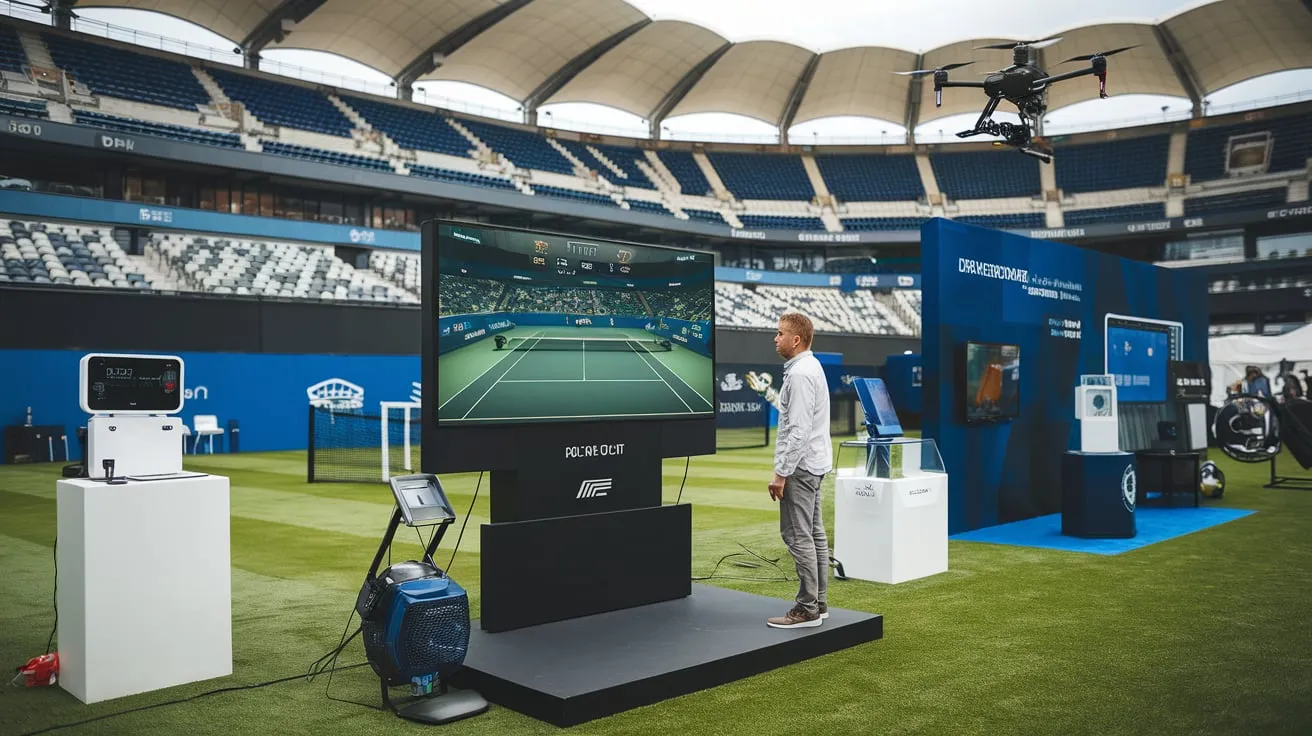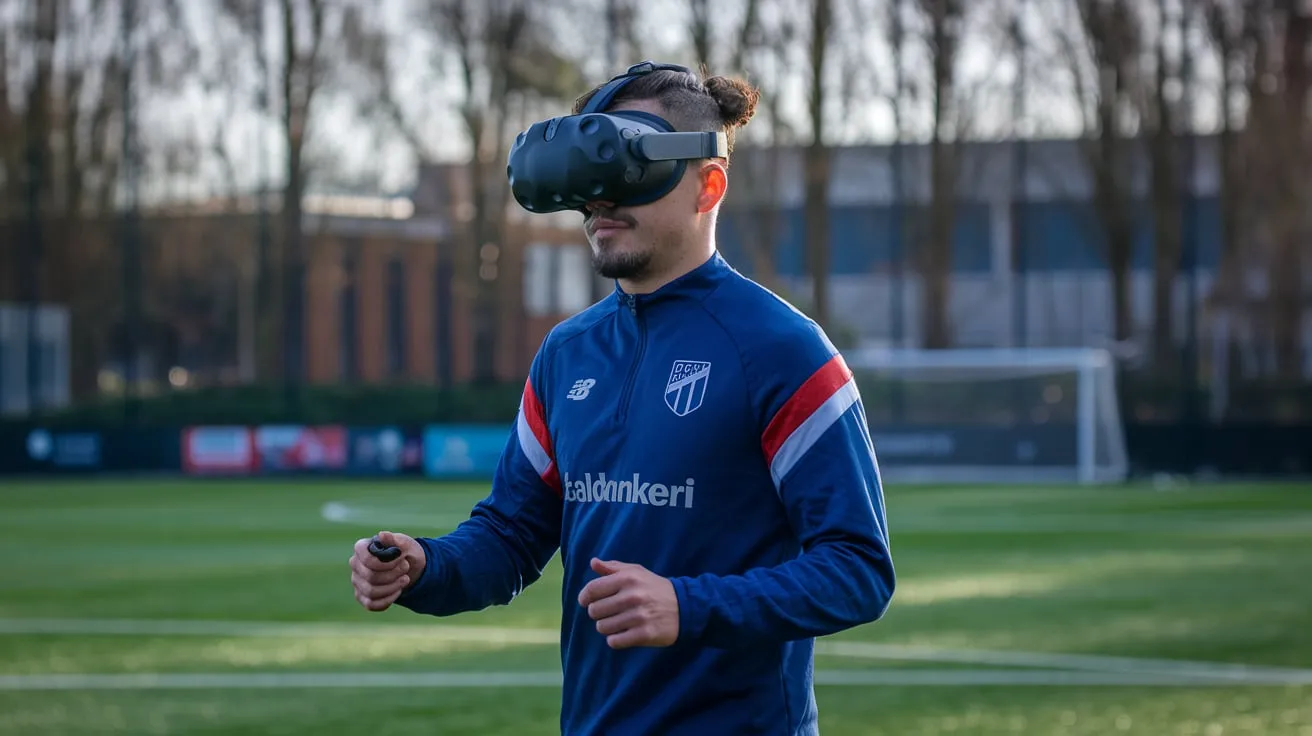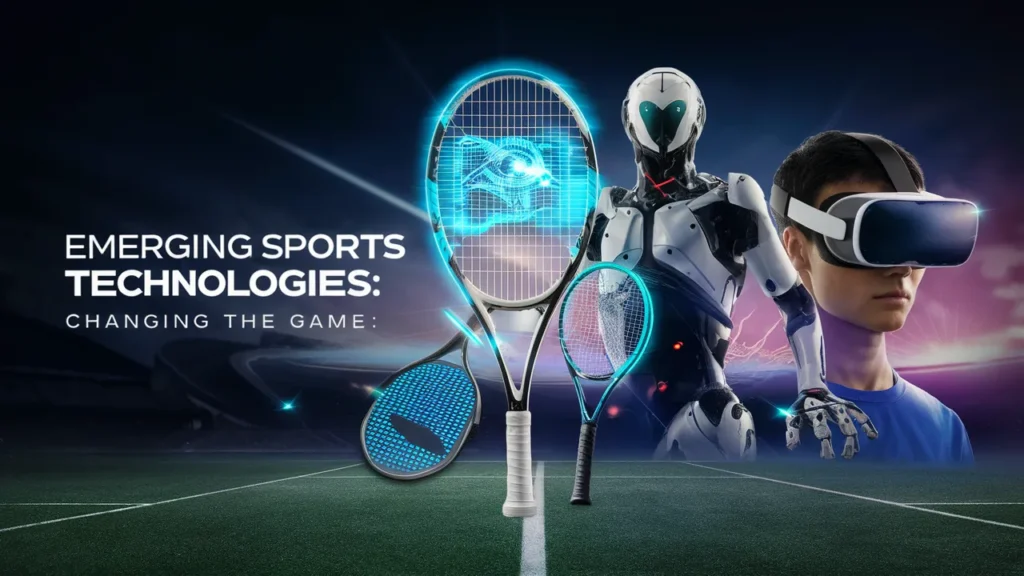Introduction to Emerging Sports Technologies
The world of sports is constantly evolving. Today, it’s not just about athletes and their training regimens but also about the technology that supports them. From wearable fitness trackers to AI-driven performance analysis, emerging sports technologies are changing the game in ways we could only dream of a few years ago. But how exactly are these advancements impacting the world of sports?
Emerging Sports Technologies
We’re living in an age where technology plays a pivotal role in almost every aspect of our lives. Sports are no exception. New sports technologies have completely changed how teams play, how athletes prepare, and even how fans interact with their teams. But what are these technologies, and how do they impact the sports world?
In this article, we’ll dive into the exciting world of sports tech, from wearables and AI to virtual reality and smart equipment. You’ll learn how these innovations are reshaping the playing field—literally and figuratively.
The Role of Wearables in Athlete Performance
Wearables like smartwatches, fitness trackers, and heart rate monitors have become standard gear for athletes. These devices provide real-time feedback on various health metrics, such as heart rate, calories burned, and sleep patterns. However, how does this result in improved performance?
Imagine receiving real-time hydration level information from your watch while you’re running a marathon. This information allows athletes to make immediate adjustments, whether it’s pacing themselves better or taking a water break. It resembles wearing a personal coach around your wrist.
Read More: 2024 MLB Controversies: Top 5 Shocking Baseball Events

Artificial Intelligence in Sports Coaching
AI has moved from science fiction to reality, and its presence in sports coaching is undeniable. AI-powered systems can analyze game footage, suggest strategies, and even predict opponents’ moves. It’s like having a virtual assistant that never tires, always providing insights.
Athletes can review their performance in real-time, using AI to break down their movements and highlight areas for improvement. It’s one thing to hear “your footwork needs work,” but it’s another to see AI-generated visuals showing exactly how to fix it.
Virtual and Augmented Reality for Training
Virtual Reality (VR) and Augmented Reality (AR) have taken training to a whole new level. With VR, athletes can simulate game scenarios, practicing in a risk-free environment. Whether it’s a quarterback perfecting his throw or a soccer player sharpening his penalty kicks, VR offers a safe, controlled space for practice.
AR, on the other hand, overlays virtual elements onto real-world environments, helping athletes analyze their surroundings during practice. Think of it as a live-action video game, where athletes can make split-second decisions with added layers of information.
Smart Equipment and Gear
Smart gear is not just limited to wearables. From soccer balls that measure speed and spin to basketballs with embedded sensors that track shot accuracy, smart equipment is providing deeper insights into performance. These tools allow athletes to fine-tune their game like never before.
For instance, a tennis racket with embedded sensors can analyze the angle and force of each stroke, providing feedback that can help improve swing technique. It’s like turning every piece of gear into a coach that offers instant feedback.
Data Analytics in Sports: Enhancing Performance
Data analytics has been a game-changer in the sports world. Coaches, trainers, and athletes now have access to an unprecedented amount of data, which can be used to optimize performance. Metrics such as speed, acceleration, and player positioning are tracked and analyzed to develop personalized training plans.
Think of data analytics as the “moneyball” of modern sports. Teams can use statistics to influence decisions about injury prevention, game plans, and player rotations.
Biomechanics: Understanding Body Movements
Biomechanics, the study of body movements, has gained importance in sports technology. With advanced motion capture systems, athletes can understand the intricacies of their movements, from how they sprint to how they jump. This knowledge is crucial for improving technique and preventing injuries.
Biomechanical analysis is especially useful for athletes in sports that require precise movements, such as gymnastics or swimming. By dissecting every motion, athletes can tweak their movements for maximum efficiency and reduced injury risk.
E-Sports and Gaming Technology Integration
E-sports is not just a niche interest anymore. The integration of gaming technology into traditional sports has expanded the definition of what it means to be an “athlete.” With the rise of e-sports, athletes are now required to have not only physical prowess but also sharp cognitive skills and hand-eye coordination.
In this tech-savvy domain, reaction times, strategic thinking, and in-depth knowledge of the game can be just as critical as physical conditioning.
Injury Prevention and Recovery Through Technology
Athletes push their bodies to the limit, and injuries are an unfortunate reality. However, emerging sports technologies are changing how injuries are prevented and treated. Devices like infrared sensors, compression gear, and muscle stimulators are helping athletes recover faster and more efficiently.
Additionally, advancements in medical technology, such as 3D-printed braces and exoskeletons, are giving athletes the ability to return to their sport quicker and stronger than ever before.
Fan Engagement: Technology Changing Spectator Experience
It’s not just the athletes who benefit from emerging sports technologies. Fans are now more connected to the action than ever before. Augmented reality apps, 360-degree live streaming, and virtual reality experiences allow fans to immerse themselves in the game as if they were on the field.
Imagine watching a basketball game from the viewpoint of a player or using AR to analyze stats in real time while sitting in the stadium. These innovations are transforming the way fans consume sports.
Ethical Concerns: Are We Going Too Far?
While the benefits of emerging sports technologies are undeniable, they also raise important ethical questions. Are we at risk of turning athletes into “machines,” constantly monitored and analyzed? Where do we draw the line between enhancing performance and maintaining the integrity of the sport?
These questions are critical as we continue to integrate technology into sports. It’s essential to ensure that human skill and fair play remain at the heart of competition.
Future of Emerging Sports Technologies
What does the future hold for sports technologies? While we can’t predict every innovation, it’s clear that the integration of AI, smart gear, and data analytics will continue to grow. In the near future, we might even see fully automated referees, robotic training partners, and advanced AI-driven game simulations.
One thing is for sure: sports as we know it will continue to evolve, pushing the boundaries of what’s possible.
Read More: Why T20 is Revolutionizing Cricket: A Deep Dive

People also ask
How technology in sport is changing the game?
Technology in sports is revolutionizing training, performance analysis, and fan experiences, making the game more efficient and data-driven.
How has gaming changed because of emerging technologies?
Emerging technologies in gaming have elevated graphics, AI, and interactivity, enhancing realism and creating more immersive experiences.
How has technology enhanced performance in sports?
Technology has enhanced sports performance by improving athlete monitoring, injury prevention, and personalized training programs through data analytics.
How the use of technology in football has changed the game?
Conclusion
Emerging sports technologies are changing the way athletes train, compete, and recover. From wearables to AI, these advancements are making sports more data-driven, personalized, and exciting. Whether you’re an athlete, coach, or fan, there’s no denying the profound impact of technology on the world of sports.
As we look to the future, the relationship between technology and sports will only deepen, promising even more innovations that will continue to shape how we experience the games we love.
FAQs
What are some examples of emerging sports technologies?
Emerging sports technologies include wearables, AI-based coaching tools, smart equipment, virtual reality training, and data analytics platforms.
How is AI used in sports?
AI is used in sports to analyze player performance, predict opponents’ moves, and provide strategy recommendations based on real-time data.
Can technology help prevent sports injuries?
Yes, technology such as wearable sensors, biomechanical analysis tools, and recovery devices can help prevent injuries and aid in faster recovery.
How does virtual reality benefit athletes?
Virtual reality allows athletes to practice game scenarios in a risk-free environment, helping them hone their skills without physical strain.
What ethical concerns arise with the use of sports technology?
Concerns include the potential over-reliance on technology, loss of human skill, and questions about fairness when it comes to tech-enhanced performance.




